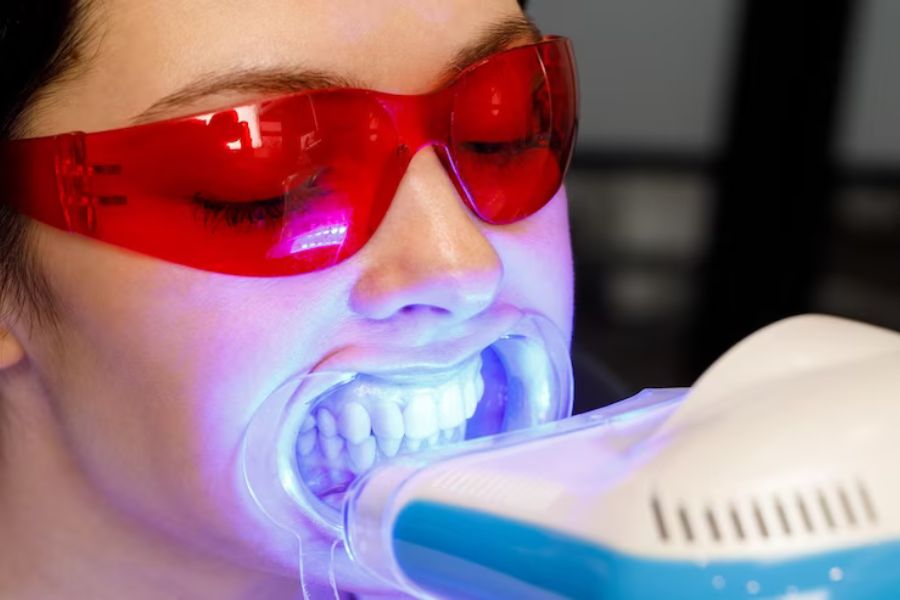Before comparing different types of professional teeth whitening, it’s important to grasp the concept of professional whitening itself. Professional teeth whitening is a cosmetic dental procedure performed under the supervision of a dental professional to lighten the color of your teeth, reduce stains, and enhance their overall appearance. It generally offers more effective and long-lasting results compared to over-the-counter whitening products.
The Benefits of Professional Teeth Whitening
Now, let’s delve into a detailed analysis of different types of professional teeth whitening options available:
In-Office Teeth Whitening
In-office teeth whitening is a popular choice for those seeking immediate and significant results. This type of treatment is performed at a dental clinic by a dental professional. It typically involves the application of a high-concentration bleaching gel on the teeth, which is activated using a special light or laser.
Take-Home Whitening Kits
Take-home whitening kits are provided by dental professionals and allow you to perform the whitening process in the comfort of your own home. The kits typically include custom-made trays and a lower-concentration whitening gel.
Whitening Strips
Whitening strips are thin, flexible plastic strips coated with a whitening gel. They are applied directly to the teeth and left in place for a specific period.
Conclusion
Choosing the right professional teeth whitening option depends on various factors, including your desired results, budget, and personal preferences. In-office treatments offer immediate and significant results, while take-home kits and whitening strips provide more flexibility and gradual whitening. Consulting with a dental professional is crucial to determine the best option for your specific needs and ensure a safe and effective teeth whitening experience.

